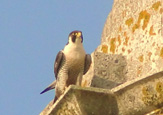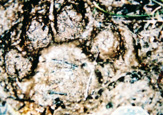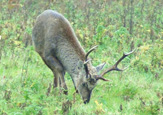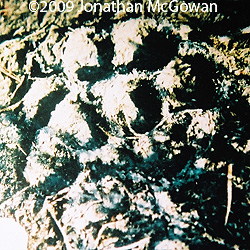





My Big Cat Research - Page 4 of 5
There have certainly been sightings that resemble these animals. However I am quite sure that there are not enough of these species to create viable breeding populations; I hope. It is one thing having three species of larger cats, with small amounts of the small species, let alone these other species. There is also the Wildcat to consider i.e. the variety that is thought to be Scottish Felis Sylvester. It was a widespread species living across all of northern Europe. (Not to be confused with the African wild cat: fells lybica is the ancestor of the domestic cat.) The species has certainly been found today on Dartmoor and surrounding areas. It may have been unofficially reintroduced, or has managed to survive the twentieth century persecution, and has been overlooked.
There have been recorded sightings in other areas of southern England, Somerset and Dorset; some of which maybe jungle cat or lynx, or hybrid cats such as 'Bengali (cross between domestic and leopard cat chausi (a cross between domestic and jungle cat) of which are becoming popular, but expensive within the designer cat fraternity. There are still feral domestic cats living in the countryside, but the animals I have seen seem to be smaller than many house cats.
There is the theory that domestic cats can grow to the size of a leopard when let wild. I do not see how this can be without the help of genetic manipulation. Natural selection does not really work in this way. It could mean that there could be any number of hybrids out there. That is not a good thing.
Many of the reports of big black cats are said to be six to eight feet in length, of which can only be leopard or jaguar. There is the possibility of melanistic pumas although very rare in the wild in Americas; it is most likely that black animals crop up from time to time. Some of the black hair I look at under the microscope seems to look like puma.
 The fact that deer and sheep carcasses have been found up trees along with typical leopard sounds and behaviour is proof to me, and many other people that most of the black animals are indeed leopard. Although I do believe that locally at least some are chocolate or even beige. I do estimate roughly twenty or more leopards perhaps up to a dozen puma and equally lynx in the county of Dorset and within ten miles over its county borders with Hampshire and Wiltshire. Obviously this number will change as young animals leave mother to search for an area of their own. The population size I estimate is a general number for animals here at any one time, which would include perhaps nine adult females five adult males and perhaps six cubs of three separate litters. This is more of an idea than strict fact, but it is a more likely idea than shear guesswork. It is difficult to tell apart male from female spoor.
The fact that deer and sheep carcasses have been found up trees along with typical leopard sounds and behaviour is proof to me, and many other people that most of the black animals are indeed leopard. Although I do believe that locally at least some are chocolate or even beige. I do estimate roughly twenty or more leopards perhaps up to a dozen puma and equally lynx in the county of Dorset and within ten miles over its county borders with Hampshire and Wiltshire. Obviously this number will change as young animals leave mother to search for an area of their own. The population size I estimate is a general number for animals here at any one time, which would include perhaps nine adult females five adult males and perhaps six cubs of three separate litters. This is more of an idea than strict fact, but it is a more likely idea than shear guesswork. It is difficult to tell apart male from female spoor.
Foot prints are of great interest for many reasons, usually easy to tell from dogs but there are problems with some of the larger breeds of which have similar prints to leopard. Basically a cat has wider toe impressions with a slightly leading toe always the second one in, and a heel pad that consists of a three lobed back end edge to it rather the two in the dog’s case. But, it would seem that there is a dog or two that has a sort of three lobed hind edge to its heel pad, not as pronounced as a cats, but enough to be of interest along with a vary large size and broadness. But it usually has claw marks showing.
There is a big difference in shape of cat and dog claws cat claws of which are all generally the same shape, are deep, but thin creating marks which look like knife blade cuts different to the shallow but wider claws of dogs. Cats do not walk with their claws extended but only when jumping or steadying themselves in mud, but there are some complications. It would seem likely though that leopards, like most cat species follow traditional rules and allow males to be much larger than females. This does seem to be the case in both witness reports and spoor print sizes. There does seem to be some difference in typical leopard behaviour though, and that is, the archetypal leopard does not like to run far, and tends to be rather lazy yet here, cats are running down deer like hunting dogs running long distances across fields. Also adults may move out and some move in. As some are killed, males may find a vacant area.
The photo shows leopard tracks